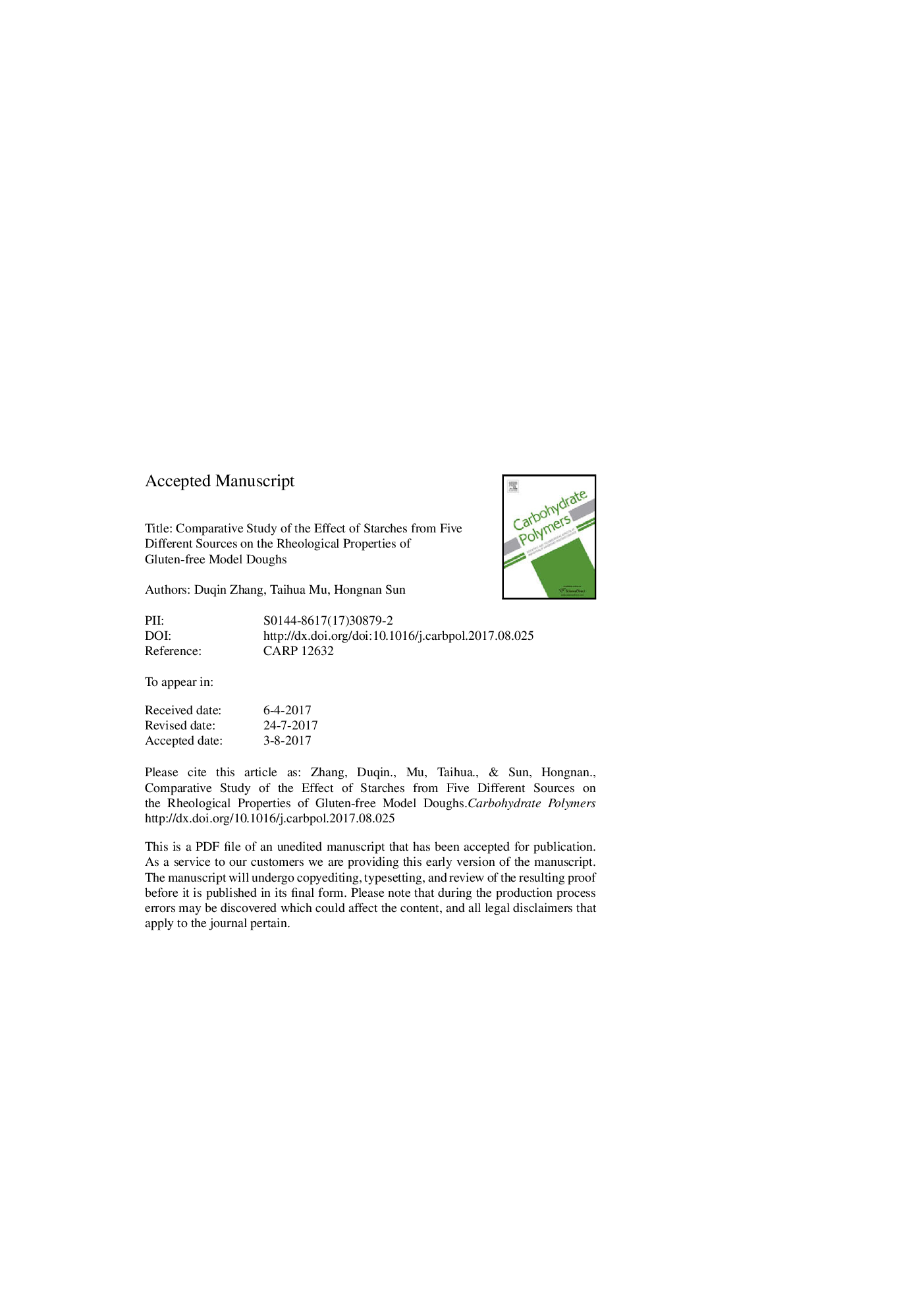| Article ID | Journal | Published Year | Pages | File Type |
|---|---|---|---|---|
| 5156573 | Carbohydrate Polymers | 2017 | 44 Pages |
Abstract
We investigated the effect of wheat (WS), corn (CS), tapioca (TS), sweet potato (SS) and potato (PS) starches on the rheological properties of starch-hydroxypropylmethylcellulose (HPMC) model doughs. Significant differences were found among model doughs made with different starches in terms of water absorption, development time, and strength. The PS-HPMC dough presented higher maximum creep compliance, followed successively by SS-, TS-, CS-, and WS-HPMC doughs, and the same order was found for the degree of dependence of Gâ² on frequency sweep, suggesting that the resistance to deformation depends on network structure stability. More water distributed between hydration sites of HPMC and starch surface, leading to more hydrogen bonds and the formation of stable network. In conclusion, the rheological properties of model doughs are largely due to variation in structural and physicochemical properties of different starches, as well as varying interactions between different starches and HPMC.
Keywords
Boric acid (PubChem CID: 7628)Copper sulfate (PubChem CID: 24462)Water (PubChem CID: 962)Ethanol (PubChem CID: 702)Sodium acetate (PubChem CID: 517045)Acetic acid (PubChem CID: 176)Sulfuric acid (PubChem CID: 1118)Moisture distributionRheological propertiesNetwork structureStarchSodium hydroxide (PubChem CID: 14798)Sodium chloride (PubChem CID: 5234)Glucose (PubChem CID: 79025)
Related Topics
Physical Sciences and Engineering
Chemistry
Organic Chemistry
Authors
Duqin Zhang, Taihua Mu, Hongnan Sun,
